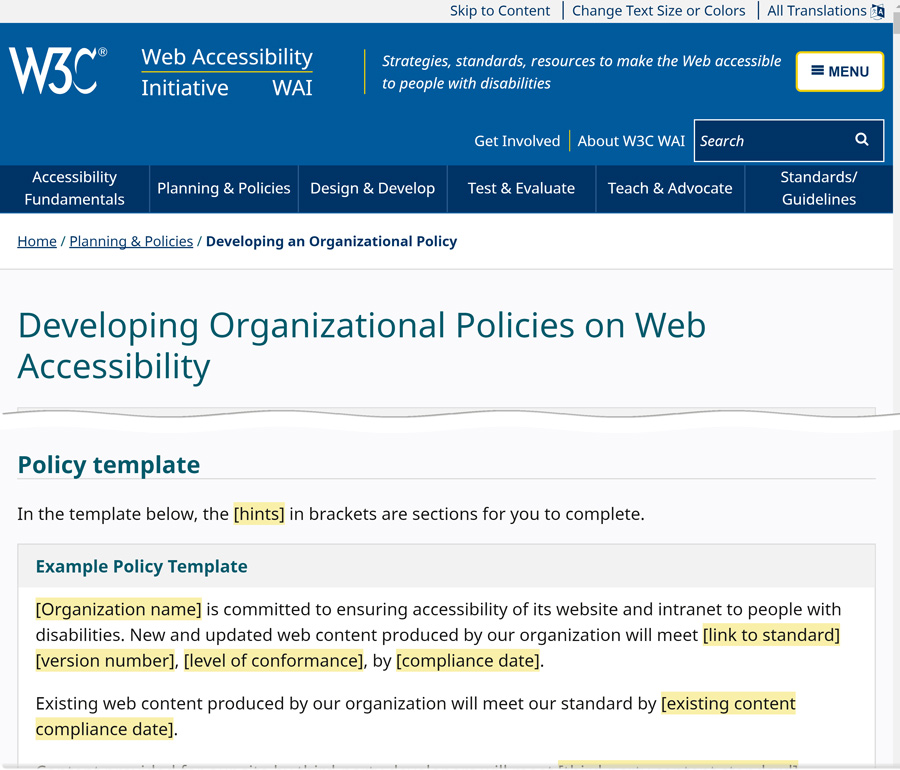Create a Roadmap for Sustained Accessible Efforts
The commitment to be accessible is important, but you need a more concrete roadmap to sustain this commitment. This roadmap requires at least two key elements: a policy and an implementation plan.
Preliminary Work
Before you begin work on your policy and plan, take some time to gather information and identify your primary objectives.
Establish a Baseline
Baseline information helps ensure any roadmap is supported by your current reality. Gather information about different types of content on your site (e.g., webpages, multimedia, and PDFs), the technologies and third-party products you use, the current expertise of your employees, and most importantly, the current state of accessibility of your website. This information can help you make informed choices about your scope and timelines.
Identify Objects
It can sometimes take a long time to formalize a policy and action plan. An important first step is identifying your accessibility objectives. These can be things you want to work toward in the short term as well as long term goals that you will develop within your action plan. As you reflect on what you intend to accomplish, you may find yourself identifying aspirations (e.g., have an accessible website), but you should quickly convert them to clear and measurable objectives. For example:
- Include accessibility language in all agreements within the month.
- Publish an accessibility statement on our website within three months.
- Publish a policy within six months.
- Complete an action plan within seven months.
- Update the site template to conform with WCAG 2.1 Level A/AA within 12 months (to correspond with the new site launch).
- Make the public-facing website WCAG 2.1 Level A/AA conformant within 24 months.
Additional Resource
W3C: Web Accessibility Initiative—Planning and Managing Accessibility
Create an Accessibility Policy
The policy is the governance document for your group, and it will need to be reviewed and approved by the organization’s administrators or executive officers. It will probably be heavily scrutinized and will most likely be difficult to update, so it should be as succinct as possible. While policies differ, most should contain at least the following elements:
- A summary statement—This opening section should include a statement of commitment to accessibility, desired outcomes, etc. You may want to post this statement on your website.
- Effective date(s)—When will the policy take effect, and will it take effect at once or in phases?
- Scope—What areas will be included (main site, mobile version, etc.)? Are there any areas which will be excluded (archived content)? How about third-party content?
- A technical standard—If you are free to choose your own standard, we recommend using WCAG 2.1 (or possibly 2.0) Level A/AA. What will you do when standards are updated or replaced?
- Procurement—What about the things you buy? We will address this important, but often overlooked, area in the next article.
- Mechanisms for ongoing review—When will you revisit this policy? We will provide more information on evaluating your efforts later.
Featured Resource
Developing Organizational Policies on Web Accessibility—The W3C has a very thorough resource with sample policies and templates.

Create an Action Plan
An action plan is the document that guides you in converting your objectives into outcomes. It may be created before or after the policy. Its structure will be highly customized to your group, but most action plans have a few common elements like milestones, activities, staff involvement, target dates, and budget/resources.


